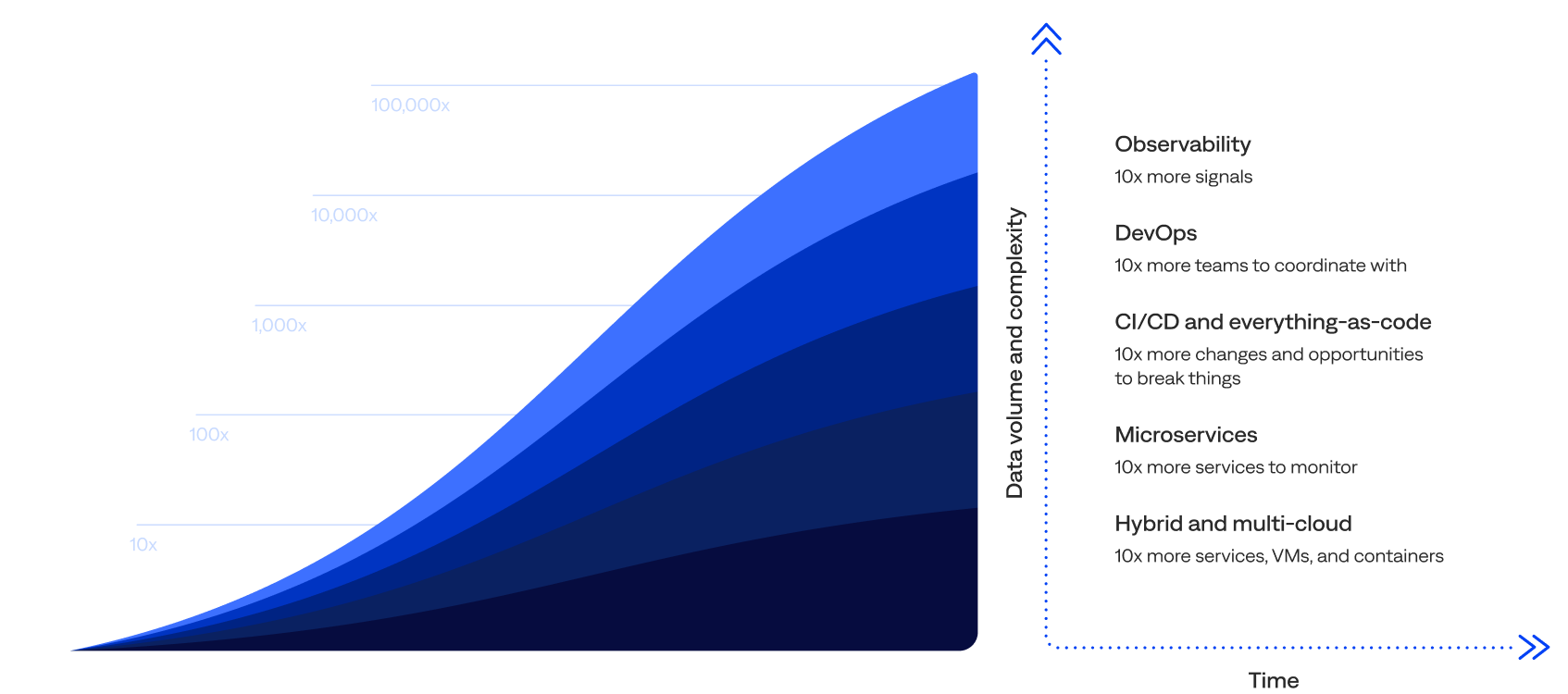Overview
Data is growing beyond the limits of human scalability, which limits IT operations (ITOps) teams’ ability to detect and respond to incidents quickly, before end-users submit tickets to the service desk.
While monitoring solutions and full-stack observability tools are evolving coverage to support hybrid cloud infrastructures, including application performance monitoring (APM), digital experience monitoring (DEM), IT infrastructure monitoring, and network performance monitoring, this expansion is primarily developer-focused.
Engineers design observability tools to ensure adequate coverage and visibility into applications, services, and infrastructure health. However, overwhelming alert noise makes detecting and responding to alerts before they become incidents challenging for humans. ITOps teams that are decentralized from observability teams must sift through a high volume of fragmented data to identify what’s important and actionable and find the context needed to triage and respond to an alert before it becomes an incident.
To address these challenges, many enterprises are adopting AIOps and event management capabilities to reduce observability noise and identify actionable alerts by clustering related symptoms across monitoring and observability tools. Enriching alerts and incidents with topology, change, and configuration management database (CMDB) data provides ITOps teams with the context needed to reduce triage and response times by creating tickets in IT service management (ITSM) platforms and automatically assigning them.
This report includes analysis and insights about L1 detection and noise reduction, including the effectiveness of monitoring tools and observability platforms for IT event management. It’s the first report based on enterprise usage of the BigPanda platform.
AIOps (artificial intelligence for IT operations) or event intelligence uses artificial intelligence (AI), machine learning (ML), and data analytics at the event management level to augment, accelerate, and automate manual efforts in the IT event management process. Key characteristics include cross-domain event ingestion, topology assembly, event correlation and reduction, pattern recognition, and remediation augmentation

Keeping the digital world running is getting harder